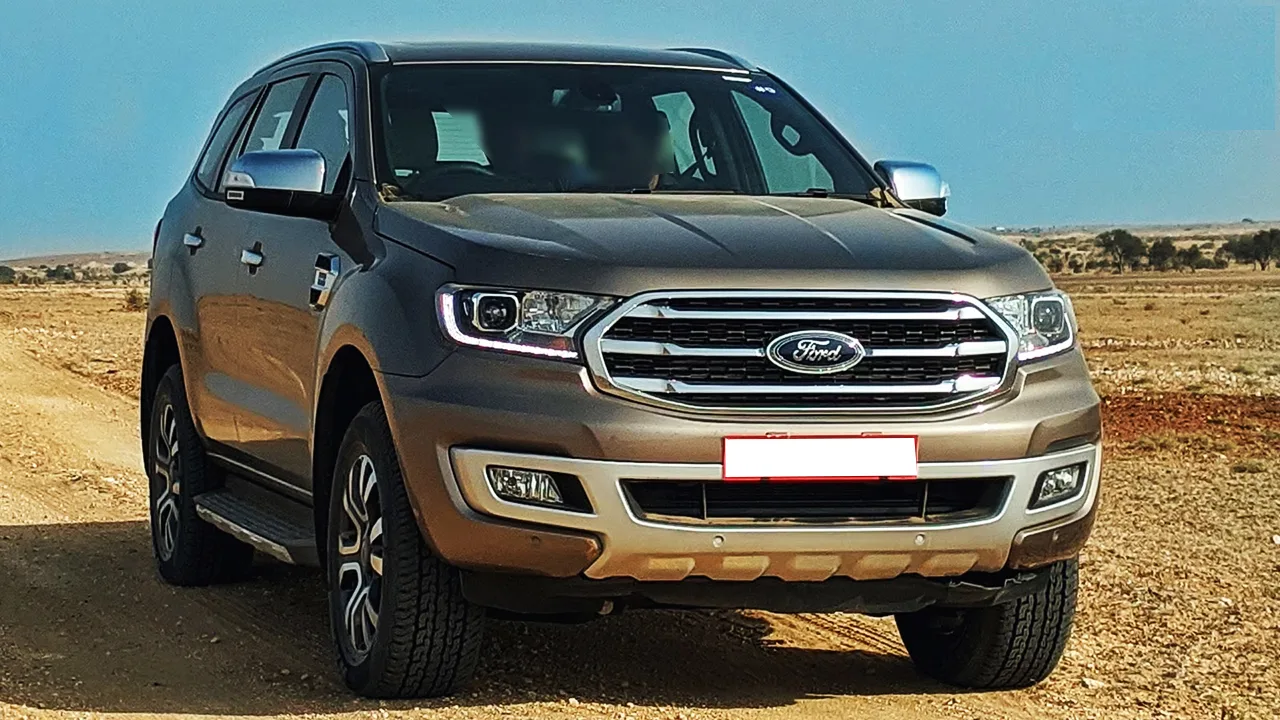Ford has a rich history in the Indian automotive market, with a presence dating back to the mid-1990s. Over the years, the company introduced a range of vehicles, earning a solid reputation among Indian consumers. However, in recent times, Ford faced challenges that prompted a reassessment of its approach in the region.
Ford Coming Back to India with Endeavour
Intense competition, changing consumer preferences, and the need for constant innovation to stay relevant in a dynamic market were among the challenges Ford encountered. The company’s decision to reevaluate its approach in India was part of a broader effort to adapt to the evolving automotive landscape.
In recent announcements, Ford has stated a renewed commitment to the Indian market. The company sees India as a strategic market with substantial growth potential. This commitment is in Ford’s plans to re-enter and revitalize its presence, aiming for a more significant market share.
Product Portfolio Revamp:
A crucial aspect of Ford’s strategy is a comprehensive revamp of its product portfolio. The company is to introduce new models and update existing ones to align with the preferences of Indian consumers. With a focus on delivering value, performance, and innovation, Ford aims to capture a diverse aim of customers.
The Indian automotive market has witnessed a growing affinity for SUVs, and Ford has historically excelled in this segment. As a part of its re-entry strategy, Ford is likely to reinforce its position in the SUV segment, potentially introducing new models or refreshing existing ones to cater to SUV enthusiasts in India.
Technology plays an important role, and connectivity features are increasingly becoming standard expectations in the automotive market. Ford’s new offerings in India incorporate the latest technological advancements, including advanced infotainment systems, smartphone integration, and possibly connected car technologies for an enhanced driving experience.
Localization Efforts:
To ensure competitiveness in the Indian market, Ford is likely to intensify its localization efforts. It involves sourcing components that do not keep costs in check. But to align with government regulations and offer products tailored to Indian conditions. An increased localization percentage is a factor of strategy for Ford to provide value for money to Indian consumers.
Collaborations and partnerships are instrumental in navigating the complexities of the Indian market. Ford may explore strategic alliances with private businesses for manufacturing, distribution, or technology collaboration. Such partnerships can enhance Ford’s understanding of the local market nuances and a more seamless market re-entry.
- Audi GT50 Concept: A Loud Reminder of Why Car Enthusiasts Fell in Love With Audi
- Nearly 30% of UK Drivers Believe Car Tax Should Be Based on Mileage — Survey
- Why Planes and Boats Escaped the Luxury Tax But Cars Didn’t
- Australia’s Headlight Confusion: Authorities Warn Drivers After Viral $250 Headlight Rule Goes Wild Online
- 2025 Hyundai Venue Facelift Launched in India – Full Details, Variants, and Price
After-Sales Service and Network Expansion:
A robust after-sales service network is critical for customer satisfaction. Ford has prioritized the growth and bolstering of its service and dealership network across India. It includes ensuring readily available spare parts, efficient maintenance services, and an overall positive ownership experience.
Sustainability is gaining prominence in the automotive industry globally. Ford may incorporate eco-friendly features into its vehicles, aligning with India’s push towards greener mobility solutions. It could involve the introduction of hybrid or electric models in Ford’s lineup, contributing to the brand’s commitment to environmental responsibility.
Adhering to local regulations is paramount for success in the Indian market. Ford has aligned its vehicles with the regulatory framework, including emission norms and safety standards. This compliance ensures that Ford’s offerings meet or exceed the expectations set by the Indian automotive regulatory authorities.
Conclusion:
Ford’s re-entry into the Indian market represents a strategic move to reclaim a significant share in one of the world’s fastest-growing automotive markets. By addressing historical challenges, adapting to changing market dynamics, and focusing on strategic pillars like product portfolio revamping, technology integration, and strong partnerships, Ford aims to make a lasting impact in India.
As consumers eagerly anticipate Ford’s new offerings, the success of the company’s re-entry will be measured not by sales figures. But by the level of acceptance and satisfaction among Indian consumers. With a dynamic and diverse market like India, Ford’s ability to cater to the unique preferences and expectations of Indian customers will be pivotal in shaping its future trajectory in the region.
